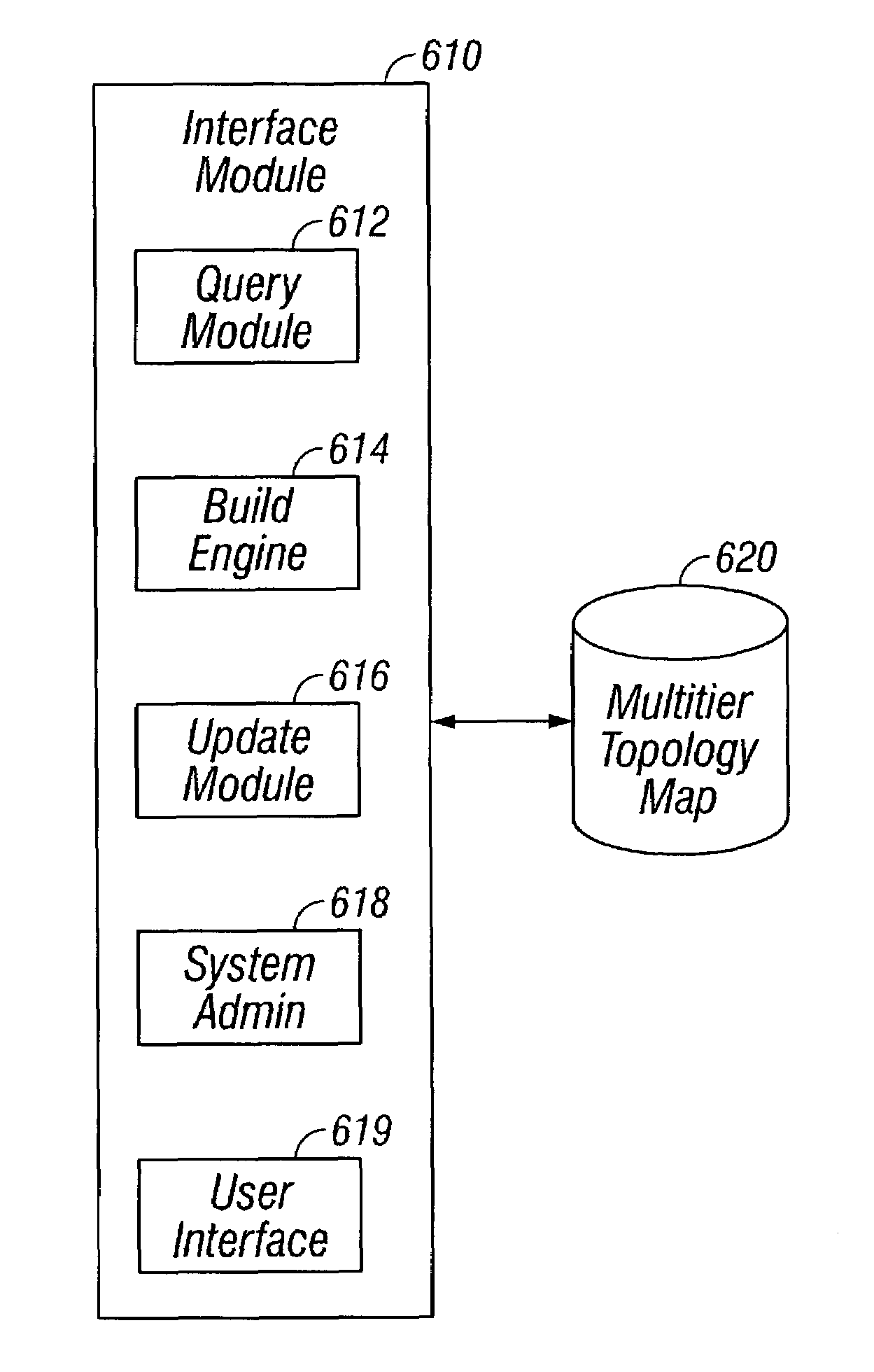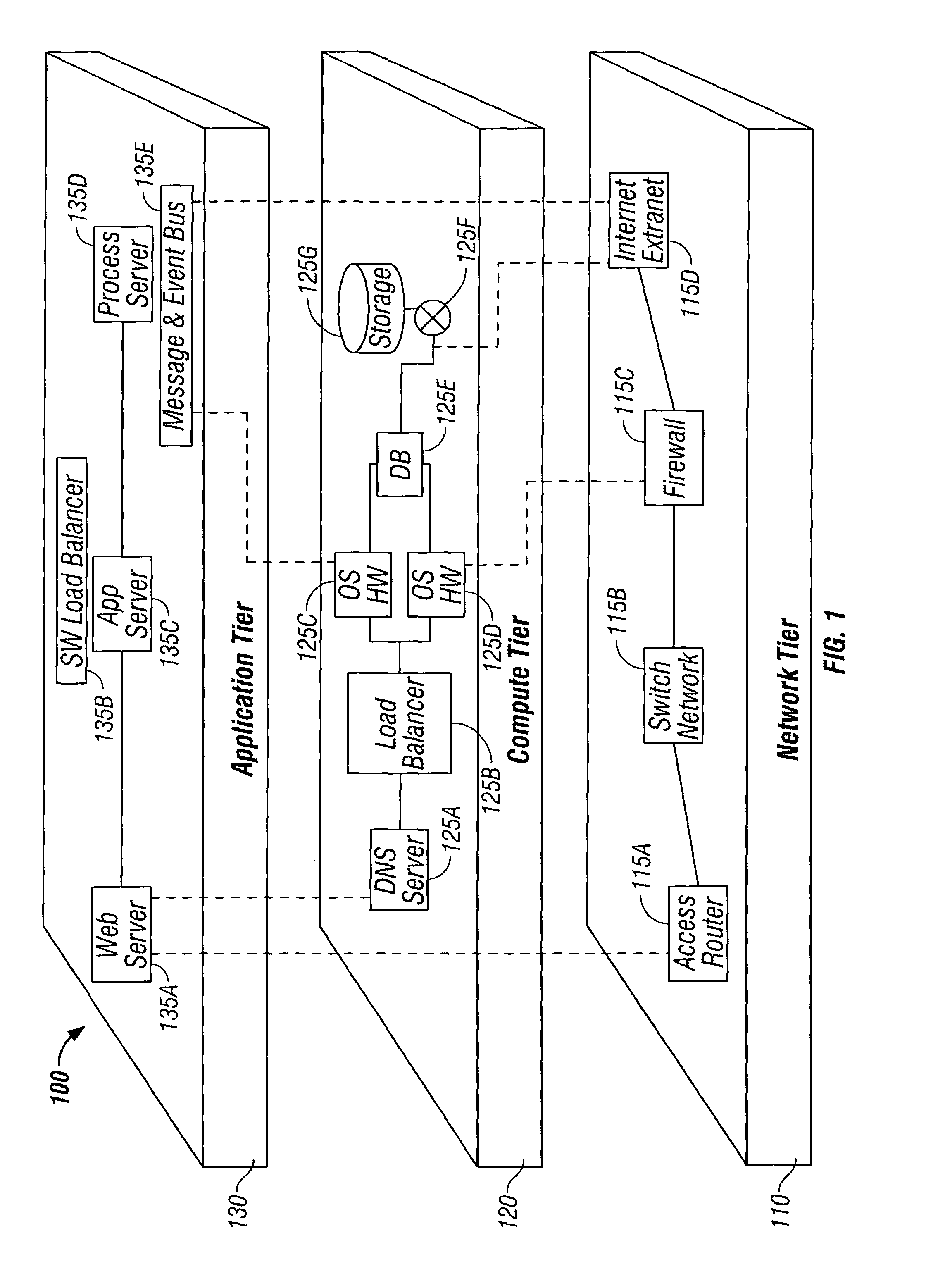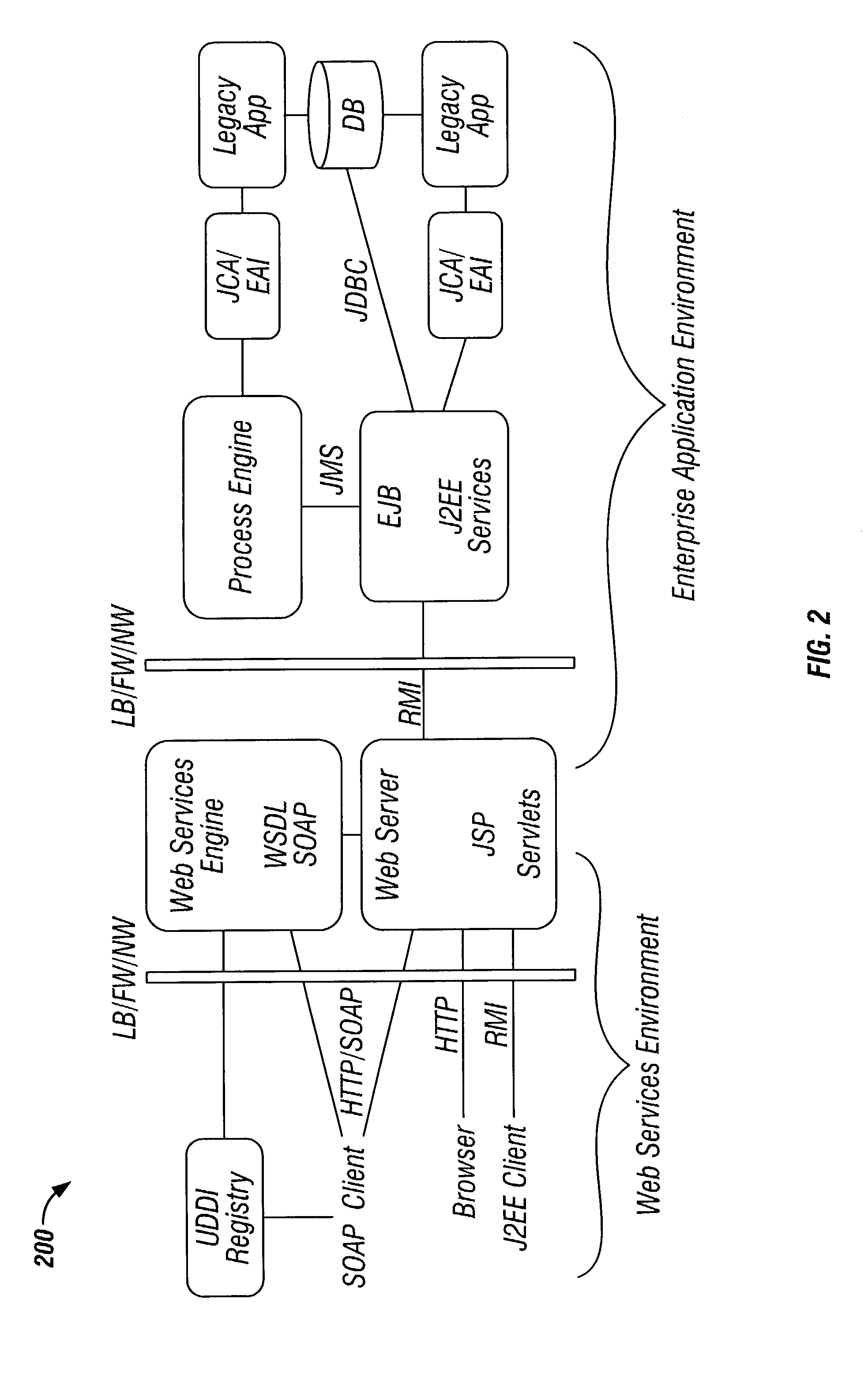Topology mapping of a multitier compute infrastructure
a compute infrastructure and topology mapping technology, applied in computing, instruments, data processing applications, etc., can solve the problems of complex cross-tier relationships, many components used, and difficulty in managing a multi-tier compute infrastructure, and achieve the effect of improving visibility into the infrastructur
- Summary
- Abstract
- Description
- Claims
- Application Information
AI Technical Summary
Benefits of technology
Problems solved by technology
Method used
Image
Examples
Embodiment Construction
[0037]FIG. 1 is a representation of an example multitier compute infrastructure 100. The infrastructure 100 includes multiple tiers 110, 120, 130 of components 115, 125, 135, which are interconnected to provide overall functionality. Generally speaking, the different tiers function at different “levels” and preferably function somewhat independently of each other. In one approach, each tier performs certain functions and there is a standardized interface between the tiers. The “interface” between the tiers may actually consist of a collection of standardized interfaces between individual components. In this way, individual tiers / components can be modified without affecting the other tiers / components so long as the interfaces are maintained. This provides flexibility and modularity. It also allows each tier to be optimized for its specific tasks. However, as a result of this, the tiers and the components can also be vastly different.
[0038]In the example shown in FIG. 1, the multitier...
PUM
 Login to View More
Login to View More Abstract
Description
Claims
Application Information
 Login to View More
Login to View More - R&D
- Intellectual Property
- Life Sciences
- Materials
- Tech Scout
- Unparalleled Data Quality
- Higher Quality Content
- 60% Fewer Hallucinations
Browse by: Latest US Patents, China's latest patents, Technical Efficacy Thesaurus, Application Domain, Technology Topic, Popular Technical Reports.
© 2025 PatSnap. All rights reserved.Legal|Privacy policy|Modern Slavery Act Transparency Statement|Sitemap|About US| Contact US: help@patsnap.com



